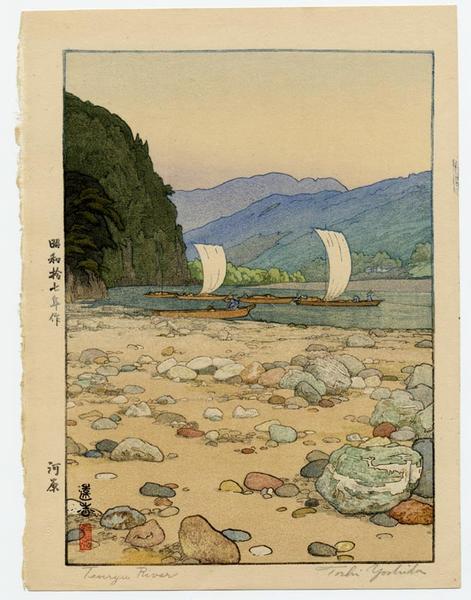
These are too numerous to recount, but they include printed wood grain effects, baren effects, effects caused by different paper absorption, and various overprinting techniques. The rest of the book discusses the various ways that these artists expanded the materials and techniques of Japanese woodblock printing, with discussions of various woods, pigment types, and papers followed by well-illustrated examples of artistic effects and techniques. Part two, "Modern Prints," begins with a brief history of the modern print movement in Japan and color plate illustrations of a dozen or so practitioners. The ukiyo-e section, while it covers some material that is easily found elsewhere, is not a historical survey but a step-by-step description of how a Japanese woodblock print is made, from getting the design onto the blocks to carving and care of tools to all the details of printing, including discussion of pigments, brushes, the traditional baren, and basic techniques like bokashi. The book is divided into two sections, the first being an overview of ukiyo-e techniques and the second detailing 20th century developments.
#Toshi yoshida moku hanga full
I love it not only because it's full of descriptions of advanced techniques, but also because it contains contributions from some of my favorite 20th century Japanese printmakers: Umetaro Azechi, Un'ichi Hiratsuka, and Kiyoshi Saito. This book comes from a period in the first decades after World War II when Japanese prints became so popular that even books about techniques could find a readership. There are plenty of books in English about Japanese prints, especially ukiyo-e prints, but books in English about Japanese woodblock techniques are few and far between. I recently spoke with someone from Tuttle Publishing about re-issuing this book (I told them I know where they can find quite a few buyers!), but sadly they weren't interested. The link above connects to Amazon, where you'll find copies starting at about $125, or you can use WorldCat to search for a library copy near you.

This wonderful book is out of print, but happily I just received a copy from my friend Paul Ritscher, a California based wood engraver, book maker, and letterpress printer. Japanese Print Making: A Handbook of Traditional and Modern Techniques by Toshi Yoshida and Rei Yuki published by Tuttle Publishing, 1966. The web page from a 2013 show of Toshi Yoshida's white line prints at Worcester Art Museum (Massachusetts) explains that some of the white lines were actually embossed using un-inked keyblocks.Įven though these aren't white line prints in the strict sense, I feel inspired by them in my pursuit of white line nirvana.

#Toshi yoshida moku hanga series
Although he was inspired by the Provincetown white line method, Toshi Yoshida's white line prints were actually multi-block facsimiles of Provincetown prints.Īn article about Yoshida's white line series on the Hanga Gallery web site says "The traditional method of creating a white line print uses a single carved matrix block, which is hand-painted with multiple colors inside each of the outlined sections… Toshi's white line prints imitated the style of the earlier Provincetown prints, but they were printed using multiple blocks in large, unlimited editions." I just discovered that Toshi Yoshida, who wrote the book Japanese Printmaking that I reviewed in the last post, did a series of prints that he referred to as 'white line' prints in the 1960s.


 0 kommentar(er)
0 kommentar(er)
